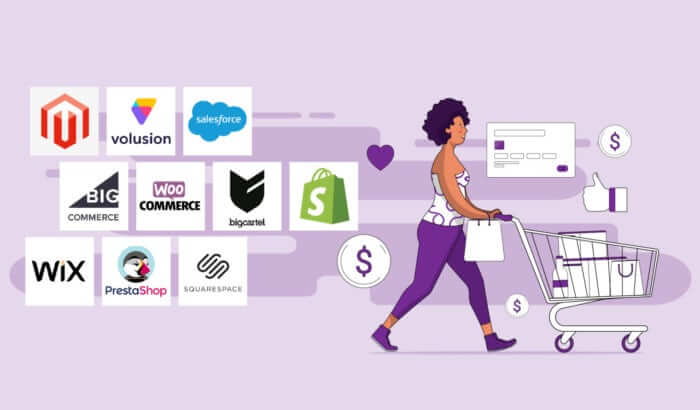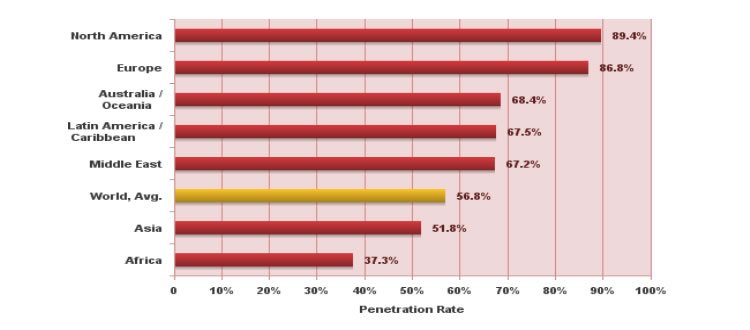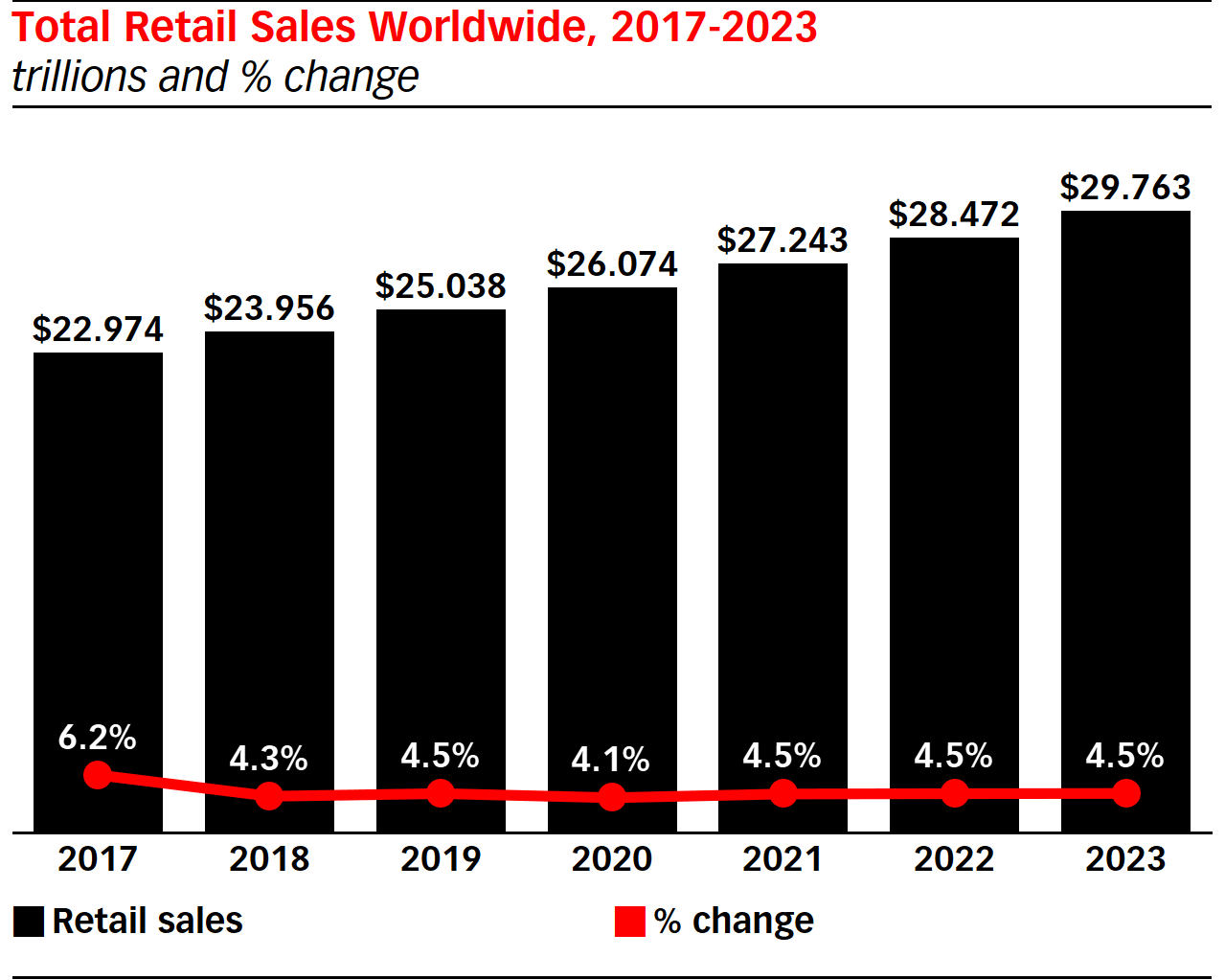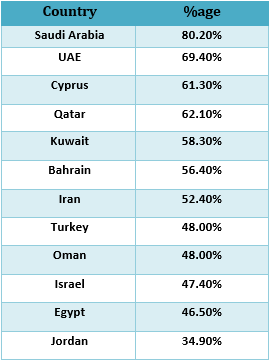Modern Ecommerce Development In a Nutshell [UAE Guide]
What are the Latest and Modern eCommerce Website Development Trends?
Ecommerce, like every other industry that thrives in the digital realm, is continually evolving. Every day, more merchants are interested in starting their own ecommerce business to suit the ever-increasing demands of clients all around the world. If your company is involved in ecommerce website development in Dubai, the information provided below will provide you with a complete understanding of some of the most important trends to come. Continue reading.
-
For a More Realistic and Immersive Online Shopping Experience, Use Augmented Reality
For digital businesses, particularly ecommerce, augmented reality (AR) technology has been a game changer. It allows customers to touch and feel the product, item, or service they’re buying, allowing them to make a more informed purchase. Technology has revolutionized the fashion and home/office décor industries.
-
The Future of Voice Search
A growing number of people are using voice-based search, which is transforming the way they shop online, order food, organize their lives, and so much more. It also provides ecommerce businesses with a fantastic opportunity to adjust their keywords, content, and stores properly.
-
Artificial Intelligence to Gain Knowledge about Customers and Their Preferences
Customers can enjoy automated and more personalized online purchasing thanks to artificial intelligence (AI) and machine learning. Customers’ buying habits, when they buy, and what they look for in a product or service are all being gathered by AI. AI may be the ideal substitute for in-store purchasing, which is desperately needed in today’s world.
[custom_html_call_us]
-
Creating Personalized Experiences
B2C and B2B buyers today seek more personalized and unique online shopping experiences. The statistics gathered from AI also give buyers more customized product recommendations and detailed customer service. Various studies revealed that offering a more personalized shopping experience online accounts for more or less 25% greater revenue generation whereas participation rate combines for approximately 40%.
-
The Role of Big Data
Consumers today are well-aware about the ecommerce websites and their motive of collecting personal data however, most doubt sharing such information because of various risks associated with online platforms. For Big Data in particular, industry professionals as well as users have mixed feelings however, a greater number of tech giants are entering the digital domain with their own ecommerce stores, paving a path to Internet of Things as well as a great many payment gateways in the UAE.
-
Chatbots for a More Amazing Shopping Experience, Every time!
Industry experts predict that by the end of 2021, more or less 90% of businesses will be using chatbots for customer support. For general queries, finding a product and assisting with overall shopping, these chatbots are an amazing, automated, AI-powered alternative to human salesperson; however, for a more specific or broader search, you may need an actual person to help you.
-
Mobile Commerce on Roller-Coaster Ride
Every online shopping or ecommerce experience from the mobile is coined as “mobile commerce”. The world today is all about mobiles/smartphones, allowing users to browse and customers to shop anytime, anywhere based on their convenience and of-course, internet accessibility. Statista also estimated that by the time 2021 would end, ecommerce sales via mobile device will account for more or less 73%. However, if your ecommerce website isn’t responsive on mobile or even through web apps, you’ll be missing out amazing opportunities.
-
Many Different Payment Gateways
Each customer has unique needs and preferences, especially when it comes to payment options. This is another important feature that can make or break a sale on the ecommerce website. By providing various payment options, there’s a high chance of increasing the conversion rates on mobile devices. If customers have valuable information saved on the website such as credit card details, bank account number and so on, there isn’t any need to provide details from scratch the next time. Some users however, refrain from sharing such information due to security and privacy concerns.
-
Headless & API-driven Ecommerce
Headless commerce allows ecommerce platform to completely detach from the complicated frontend presentation layer. Over time, more and more ecommerce businesses and brands are going for headless commerce because of backend flexibility which can further improve through SEO, content marketing as well as overall digital experience. The importance of videos can help you explain and showcase your products better than images. You can also consider adding videos of your products in your ecommerce store.
-
Subscriptions & Sustainability to Keep Users Updated & Coming Back for More
Email subscriptions, text messages on mobiles and so on, there are many different ways to subscribe to a particular business or brand service, thus planning for inventory and sales that have already been locked. Both consumers and businesses nowadays are keen on their environment and all other related effects. Yet another survey revealed that nearly 50% respondents opted for a more sustainable fashion industry whereas another 75% prefer less packaging which takes a lot of paper, plastic and cardboard.
-
Digital Strategy Optimization for Greater & Better Conversions
Bringing in customers to your website is a challenging task whereas getting them to convert into long-term loyal consumers is even a greater challenge. Back in 2020, businesses and online brands experienced a tremendous boost to their conversion rates, optimizing their product pages. Multi-channel selling through Facebook advertising or Google shopping ads, is another way to get conversions. Just be sure to understand the ins and outs of Performance Ad Creative that works amazingly in driving conversions. When intelligently used, these channels also ensure the brand is well positioned in the ever-evolving digital landscape.
-
B2B On the Rise
B2B is also going to stay, whereas another report from Statista also revealed that sales for global retail ecommerce are expected to surpass 1.5 trillion by the end of 2021. These ecommerce tasks can be automated, allowing the team to focus on more important tasks like order processing and so on. More engagement and focus on customers to boost their overall shopping experience as well as establish long-term relationships.
What to Look for in a Qualified eCommerce Website Development Company?
E-Market Integrations
- Ensure data accuracy
- Improves customer experience on multiple social media and online channels, across various touchpoints and many devices
- Faster scalability
- Consistent inventory and cost across multiple system.
- Prompt customer support
- Boost engagement and productivity
Consultancy Services
- Precise customer targeting via audience refinement
- Creating valuable new opportunities for online businesses
- Sales increase plus average order values (AOVs)
- Optimizing omnichannel capabilities
- Maximizing profits by tailored ecommerce development solutions
Visual Design Features & UX Essentials
- Better navigation, enhances user experience
- Cost and time optimization
- Product and services conversions boost
- Establishes brand equity
Best Ecommerce Platforms
There is a wide range of eCommerce platforms out there with many different features.
Here are our top ten picks along with our review/guide linked to them.
- Shopify
- Wix
- Squarespace
- Adobe Commerce (powered by Magento)
- BigCommerce
- WooCommerce
- Weebly
- Shopify Plus
- Mirakl
- WordPress
Obtaining Ecommerce License in Dubai
You must have the appropriate license to conduct eCommerce activities. Governments offer various programmes to support and promote eCommerce businesses.
Online business licenses in the UAE’s mainland
If you need to establish an online business in the UAE’s mainland, you have to apply through the Department of Economic Development (DED) in the respective emirate. All e-Trade licenses require the approval of Telecommunications and Digital Government Regulatory Authority also, which is in charge of regulating eCommerce framework and transactions in the UAE.
Dubai CommerCity (DCC) Free Zone
Dubai CommerCity is a free zone dedicated to support the growth of the eCommerce market in the Middle East and North Africa (MENA) region. It provides a unique eCommerce ecosystem to global and regional brands to help them set up and operate their eCommerce business in the MENA region. It offers:
- Pre and post set up support, fast and automated registration and licensing
- Pre-integrated and pre-configured eCommerce platform
- Smart and centralised customer relation management for a great customer experience
- Access to onsite ecosystem service providers such as payment gateways, marketing services agencies, call centres, web developers and others
- Business support which includes networking events, talent acquisition and development and marketing management.
Business incentives include:
- 100 percent foreign company ownership
- No corporate tax or income tax
- 100 percent repatriation of capital and profits.
- The eCommerce license (Tajer Abu Dhabi)
The eCommerce license from Abu Dhabi Department of Economic Development (ADDED) allows entrepreneurs to add their online trade activities to their existing licenses, or obtain a new license to conduct business through websites and social media networks.
Owners of electronic trade licenses can use the eCommerce mark (eTajer) and a serial number for the license in order to use it during the promotion of products.
DED Trader License from Dubai
The eTrader license from Dubai Economy (DED) allows UAE nationals and GCC nationals residing in Dubai to practice business activities through various social media networks.
The eTrader license can be registered under the name of a single owner only. The eTrader cannot open a shop or issue visas and in case of a legal dispute, the licensee alone will be held responsible.
To obtain an eTrader license, create a DED Trader account and register.
Eitimad domestic license from Sharjah
Sharjah Department of Economic Development (SEDD) grants Eitimad license for home-based businesses and electronic businesses which run through social networks. The license is available for ages 18 and above. The license is restricted to UAE nationals residing in the emirate of Sharjah. The license does not allow recruitment of staff in the company. Register as a user or a seller.
Virtual Merchant License from Ras Al Khaimah
The Department of Economic Development (DED) in Ras Al Khaimah launched the Virtual Trader initiative to activate businesses managed through social media channels, websites and applications for smart devices. The license is available only for UAE citizens residing in RAK.
Activities that can be licensed online include electronic retail businesses, information technology and computers, commercial and real estate brokerage, advisory, professional and information activities done through technological means.
Ecommerce Design Checklist
To help you out, we’ve put together this handy checklist to guide you through your ecommerce website development in Dubai.
Home Page – A few essential things to include on the homepage design are:
- Name and Logo
- Categories/Menu.
- Search Bar
- Competitive Advantages
- Hours of operation
- Address
- Contact Information
Product Pages
- Grid or List
- Visual Promotion
- Product Details
- Photos or GIFs
- Testimonials
Checkout Page
- Encouragement
- Security Certificates
- Progress Bar
Contact Page
- Policies
- Contact Information
Optional Pages
- Blogs, Galleries and About Pages
Ecommerce SEO Best Practices
Create a Detailed Keyword Plan
- Commercial
- Informational
- Navigational
Data Usage
- Categorize each keyword
- Identify competitors’ keywords
- Organize by volume and CPC
- Prioritize your opportunities
Ecommerce SEO best practices
- Optimize for Intent
- Website Structure is Key
- Research E-Commerce Keywords
- Add a Sitemap.xml to Your Search Console
- Utilize Dynamic Sitemaps
- Optimize Product Pages
- Embed Products within Your Content Strategy
- Optimize Category Pages
- Add Pagination Elements to Category Pages
- Create Content that Answers Users’ Queries
- Promote Your Content
- Avoid Content Cannibalizations
- Publish Content Frequently
- Easy to Read Content
- Optimize for Voice Search
- Invest in Local SEO
- Secure Your Store with HTTPS
- Fix Usability Issues
- Fix Broken Links
- Prioritize the Mobile E-Commerce Experience
- Improve Page Load Speed
- Use Internal Links to Drive Traffic to Underperforming Pages
- Run a “Branded” Link Building Strategy
Content Strategy for Ecommerce Websites
Step 1: Identify Your Target Buyer Persona
Step 2: Learn How Your Audience Consumes Content
Step 3: Research and Create Your Content
Step 4: Publish Content Based on Where It Makes Sense in the Buyer’s Journey
Step 5: Measure Results
Step 6: Ask for Customer Feedback
Must-Have Features of Ecommerce Websites for Users
- User-Friendly interface
- Mobile app
- High-Resolution Photos & Video
- User-Generated Reviews
- Special Offers
- Wish Lists
- Find-in-Store
- Related Items
- Frequently Asked Questions
- Social Proof
- Security Features
- Advanced Payment Options
- Detailed Shipping Information
- Multi-Touchpoint Contact Page
- Return Policy
Optional Features of Ecommerce Websites for Users
- The Carousel
- The Scrolljacker
- Immersive 3D Experience
- Hello, Click Me, Click Me! Modal
- Hidden Mobile Navigation
Must have Features of Ecommerce Websites for Admin
UI Kit
- Badges
- Buttons
- Floating Action Buttons
- Carousel
- Modal
- Dropdown
- Dropdown menu
- Sortable
- Nav
- Breadcrumbs
- Pagination
- Alert
- Callout
- Tooltip
- Accordion
- Tab
- Process
- Progress bar
- Spinner
- Timeline
- Timeline activity
- User Cards
- Sweet Alert
- Notification
- Advanced Medias
- Badges
- Dropdown grid
- Dropdown menu
- Dropdown
- Border
- Color
- Draggable Portlet
- Bootstrap Switch
- Date Paginator
- Horizontal Timeline
- Nestable
- Ribbons
Widgets
- Statistic
- Chat Box
- Social
- Weather
- Blog
- Chart widgets
- List widgets
- Social widgets
- Pricing tables
- Coming soon
- Live Chat
- Calendar
- Mailbox
- Taskboard
Form
- Default inputs
- Material inputs
- success inputs
- warning inputs
- error inputs
- Combine inputs
- Custom checkboxes
- Custom radios
- Password strength
- Form layouts
- Color picker
- Date time selector
- Select picker
- Upload buttons
- Form Validation
- Form Wizard
- Code Editor
- Markdown
- Xeditable Editor
- Formatter
- Pre-made Forms
Extra pages
- Support Ticket
- Invoice
- Profile
- Login
- Register
- Lockscreen
- 404 Error
- 500 Error
- Blank Page
- Pace Page
- Recover password
- Maintenance
[custom_html_subscribe]
Global Ecommerce Stats
E-commerce Penetration as %age of Total Retail Sales
Estimated E-commerce User Penetration in 2021
- 85% of consumers in the UAE and 80% in KSA use mobile devices to get information about the products they intend to buy.
- 61% of shoppers in GCC use cards for online transactions.
- In 2020, 44% of online purchases in MENA were made using the card, compared to 23% cash purchases.
- 30% of consumers in MENA used COD as a payment method in May 2020.
- Almost 56% of consumers in the UAE, KSA and Egypt start their online shopping journeys using search engines as opposed to retailers’ websites
- More than 60% of shoppers in the UAE and KSA and 43% in Egypt have completed an online transaction at least once
- 62% of MENA online shoppers prefer COD as a payment method when buying online.
- Middle East countries experience an annual e-commerce growth of 23% from 2018 to 2021.
- The coronavirus outbreak contributed to the growth of the e-commerce sector in the middle east, as over 40% of respondents started shopping online more than they did before the outbreak. In MENA, the estimated e-commerce sales in 2021 are about $49 billion. E-commerce in UAE has a total retail sales percentage of 4.2%.










